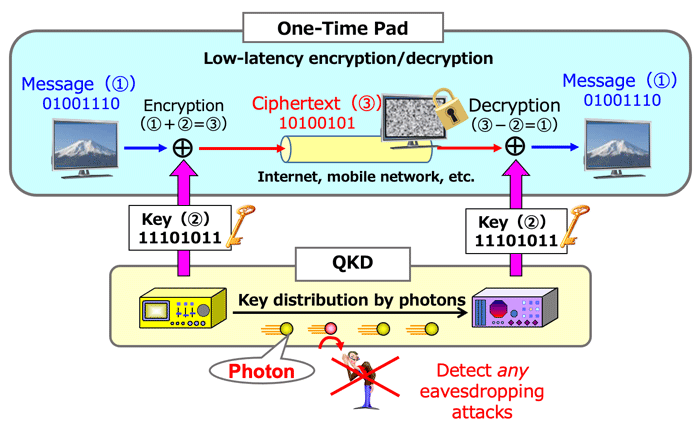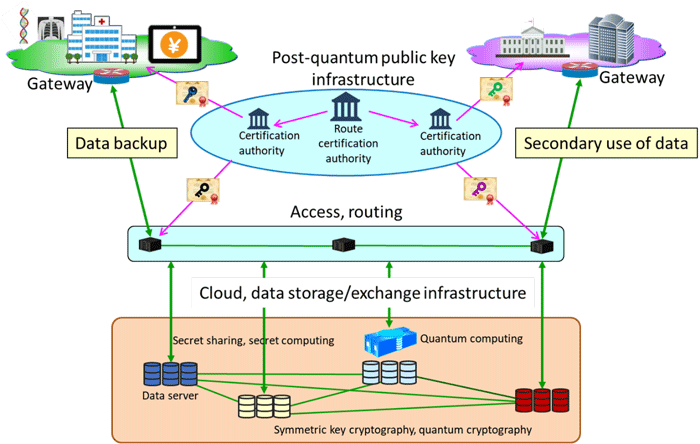Beginning Joint Verification Tests on Quantum Cryptography Technology to Enhance Cybersecurity in the Financial Sector
-Testing practicality in large-capacity and low-latency communications in stock transactions-
January 18, 2021
(Japanese version released on December 21, 2020)
National Institute of Information and Communications Technology
Nomura Holdings, Inc.
Nomura Securities Co., Ltd.
Toshiba Corporation
NEC Corporation
Background
About This Project
Overview of the Joint Verification Test

Implementation Structure
- Nomura HD and Nomura Securities: Providing its own system; generation of pseudo-data (fictitious data) compatible with actual financial practice; and verification of the applicability to financial practice, etc.
- NICT: Operation and administration of Tokyo QKD Network; the provision of quantum secure cloud system; and functional validation in the financial environment.
- Toshiba: Installation and operational support of quantum key distribution system; investigation and construction of a collaborative system using quantum cryptography and cryptographic communication applications based on experience and knowledge from other field experiments.
- NEC: Investigation and construction of a collaborative system using quantum key distribution system and authentication technology for access management, based on experience and knowledge from development, operation and field demonstrations of quantum key distribution systems.


Contact information
Nomura Holdings, Group Corporate Communications Dept.
Tel: +81 3 3278 0591
National Institute of Information and Communications Technology,
Public Relations Department, Press Office
E-mail:




















Toshiba Corporation, Media Relation Group
Tel: +81 3 3457 2100
NEC Corporation, Corporate Communications Division
Tel: +81 3 3798 6511

